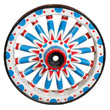Hagenbeck-Wallace Steam Calliope
by Joseph Bradbury
The origin of the wagon is obscure, although it first appeared on the Hagenbeck-Wallace Circus in the period of 1917-19. It was built to replace the old Carl Hagenbeck steamer that Hagenbeck-WaIlace had used since the 1907 season and was supposed to have been destroyed in a wreck about 1917 or 1918. Just who built the calliope is also uncertain. Some theorize that carvings from an old Great Wallace tableau were used to decorate the new wagon, but if that is so, I have never seen a photo of any earlier wagon using the carvings that appear on this calliope. Frankly, those dewey eyed cupids that appear on the wagon have the “Bode” look to them, and I wouldn’t be surprised to find out that perhaps the Bode Wagon Works of Cincinnati furnished the carvings and may have built the wagon themselves. Mind you this is only a guess as I have no evidence to support that at all. Perhaps some Bandwagon reader can supply us with the correct data concerning the origin of the wagon.
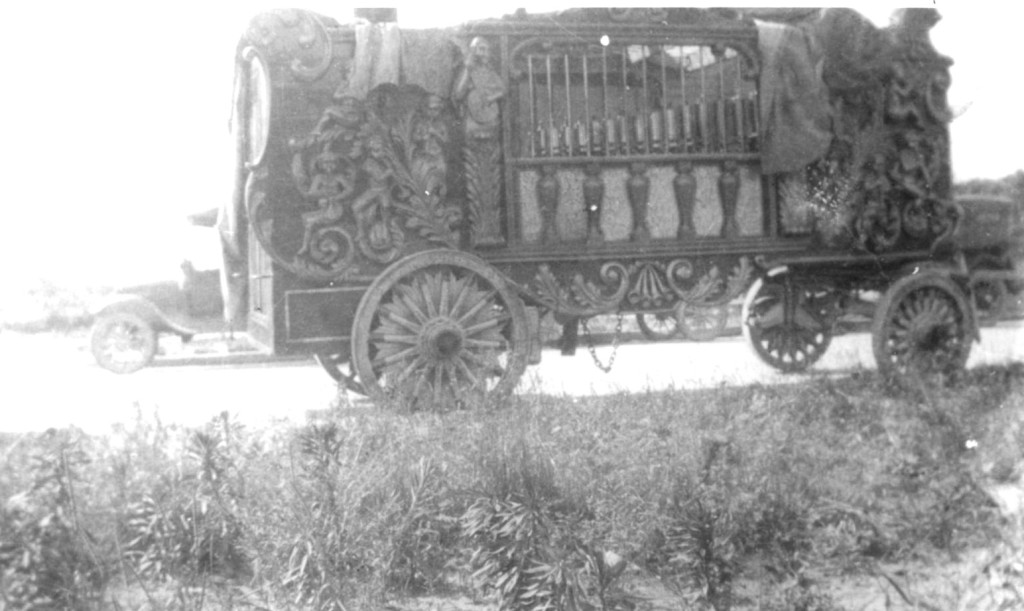
( 1922 – Conover Set # 800 – photo # 315 )
Some time ago I saw a photo of this wagon that the late Crazy Ray Choisser, well known steam calliope player, had sent a fan and on the back Ray had written some data about the calliope. He wrote that this was the new 32 whistle steamer that Hagenbeck-WaIlace had in 1919 that he played during the shows long California tour that season. I sorta think perhaps Ray also meant that the wagon as well as the instrument was new for the 1919 season. Following the terrible 1918 wreck of the Hagenbeck-Wallace train that took so many lives, owner Edward Ballard become associated with Jerry Mugivan and Bert Bowers in a partnership that eventually led to the formation of the American Circus Corporation. The trio operated the Hagenbeck-Wallace Circus for the 1919 season putting it on the road on a train consisting of 30 cars, which included 2 advance, 7 stocks, 14 flats, and 7 coaches. Considerable revamping of the show took place in the winter of 1918-19 and I think there is a good chance that is when this new calliope was built.
We know that the calliope was on the show from the 1919 season through the 1924 season being used in the show’s street parades. In 1925 it was left in Peru quarters as Mugavin and Bowers had not intended for Hagenbeck-Wallace to parade that season, but after about a month the parade was revived and the calliope was sent from Peru to rejoin the show where it remained for the rest of the season.
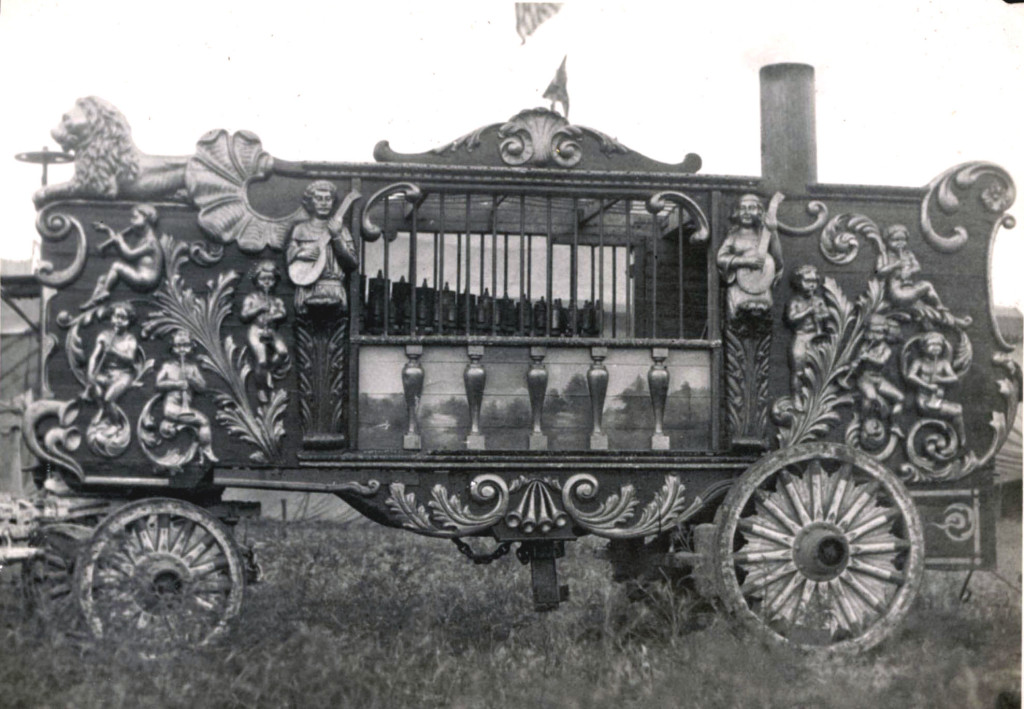
( 1925 – Joseph Bradbury Album # 9 – photo # 28B – Hagenbeck-Wallace in Oil City, PA. – P.M. McClintock photo )
The year 1925 saw the last of the Mugivan and Bowers parades and following the season the steam calliope along with the other parade equipment was stored in Peru quarters.
In 1932, Manager Jess Adkins decided to take along with Hagenbeck-Wallace a steam calliope to be used for lot concerts and wanted to take this one, but it was found that it was not in good enough condition to make the tour, so he ended up taking along the old Sells-Floto steamer, commonly called the Two Jesters.
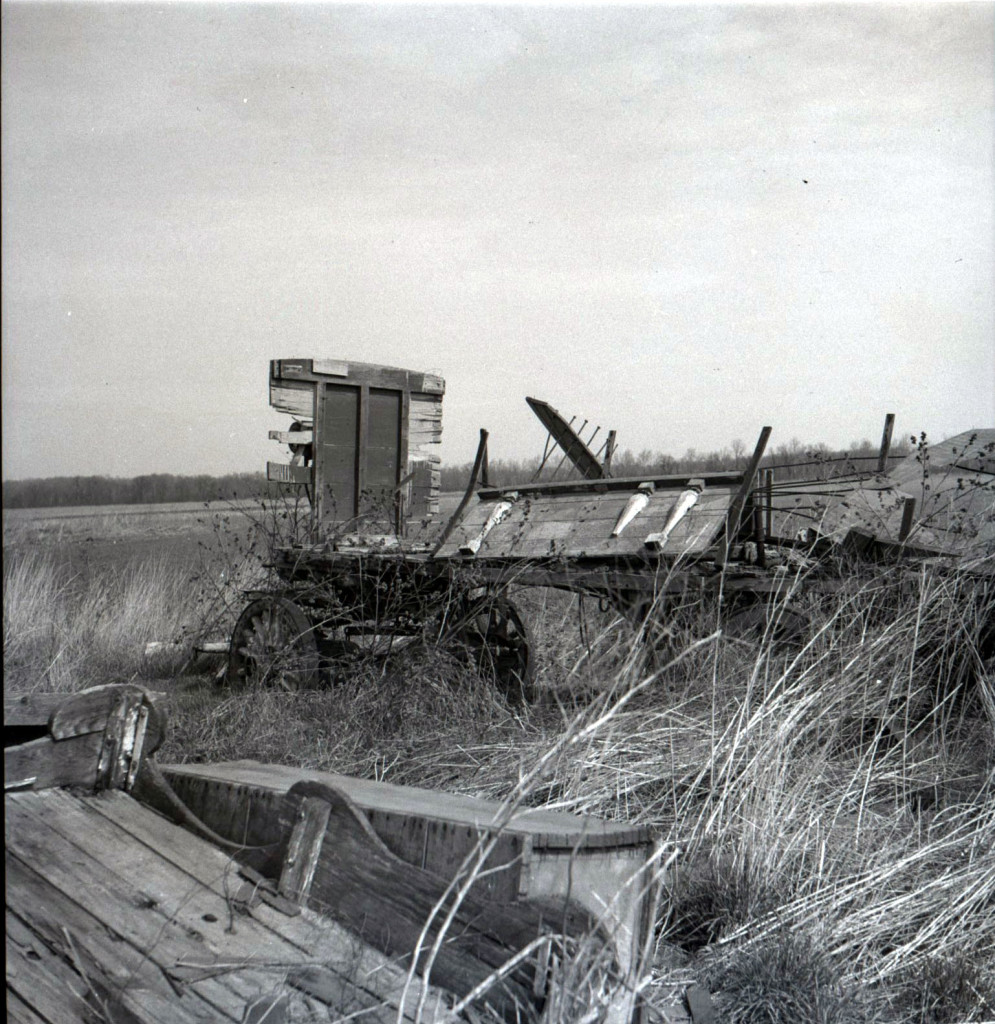
( This is an undocumented loose negative in the Conover Photographic collection )
In 1935 the calliope was dismantled and the side panels were painted up and removed to the Miami County Museum which is located on the third floor of the Courthouse in Peru, Indiana. Along with panels from other old tableau wagons the museum now has a very attractive display and one that no true wagon fan would want to miss.
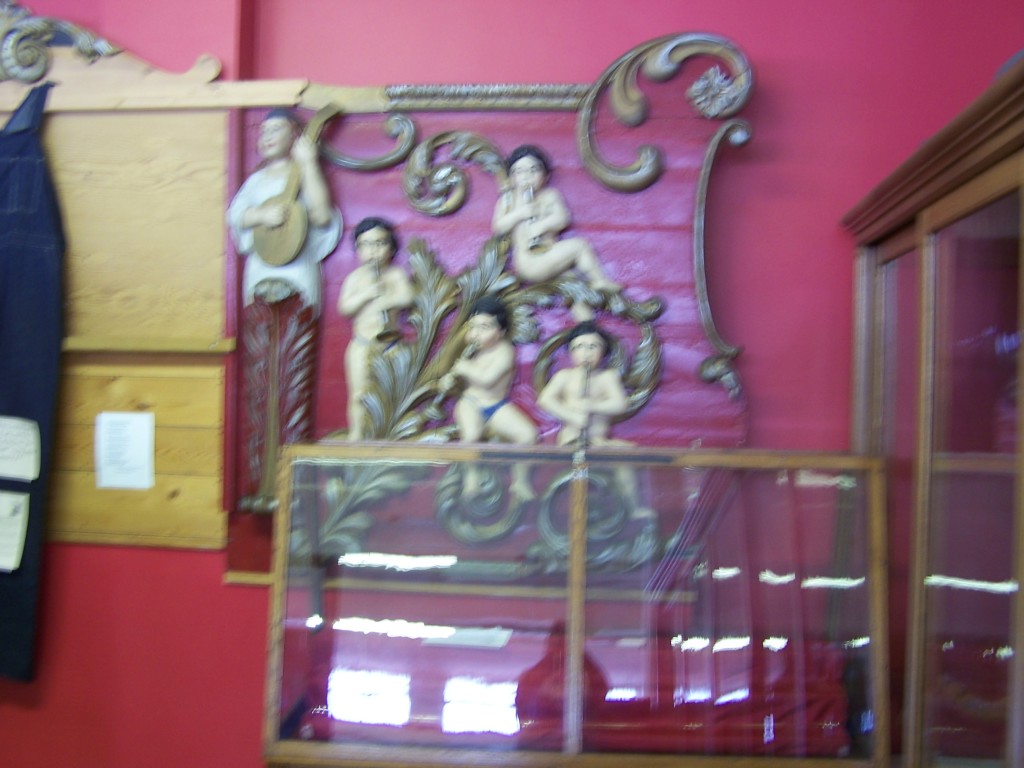 ( 2013 – Remaining carvings as seen in the Miami Co. Museum in Peru, Indiana – Bob Cline )
( 2013 – Remaining carvings as seen in the Miami Co. Museum in Peru, Indiana – Bob Cline )
(1) Bandwagon, Vol. 2, No. 5 (Sep-Oct), 1958, pp. 4-6
If you have any questions or have more photographic evidence, feel free to contact us at circuswagons@gmail.com
